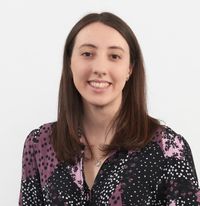Chase to cut savings rate after base rate reduction – is it still a best-buy?
Chase’s popular saver is linked to the base rate, meaning its rate will come down this week after the Bank of England’s recent move. Is it still a best-buy account?


Chase’s current account and linked saver are a favourite with MoneyWeek readers, but the rate on the savings account is set to fall this week (14 November) by 0.25 percentage points. This will bring Chase’s easy-access savings rate to 3.5% AER.
It comes after the Bank of England cut the base rate from 5% to 4.75% on 7 November. The Chase account pays a tracker rate, which is currently set at 1.25 percentage points below the base rate.
At 3.5%, the new rate is still comfortably higher than the market average of 2.99%. What’s more, Chase isn’t the only provider to evolve its offering in response to Bank of England cuts. Data from Moneyfacts suggests at least 32 providers have cut their rates since the announcement on 7 November. But can you get a better rate elsewhere?
MoneyWeek
Subscribe to MoneyWeek today and get your first six magazine issues absolutely FREE

Sign up to Money Morning
Don't miss the latest investment and personal finances news, market analysis, plus money-saving tips with our free twice-daily newsletter
Don't miss the latest investment and personal finances news, market analysis, plus money-saving tips with our free twice-daily newsletter
We take a closer look at Chase’s offering and how it compares to others on the market. Is it still a best-buy savings account?
Is Chase’s savings rate competitive?
One of the reasons Chase’s account has attracted interest in recent months is that it used to offer one of the best rates on the market. As recently as July this year, savers could earn up to 5.1%. However, the offering has become less competitive as the savings market has cooled.
Chase still pays above-average interest, but other providers currently offer higher rates. Some easy-access accounts are still paying up to 5%. This means the new Chase rate is around 1.5 percentage points lower than what you could be earning elsewhere.
It is worth mentioning that some Chase savers are currently earning a higher rate than the advertised deal, having locked into a temporary ‘booster’ deal that has since closed. If you are one of these customers, you will earn an additional 1% until 16 January 2025.
‘Boosted’ customers will still be affected by the reduction on 14 November, in line with the base rate cut. This will take their overall rate from 4.75% to 4.5%.
Of course, the advertised rate isn’t the only thing to look out for when choosing a savings account. You should read the terms and conditions carefully to understand whether there are any criteria you need to meet to qualify.
Some accounts only pay the advertised rate on balances up to a certain level. Others have minimum opening amounts. Furthermore, not all accounts are flexible when it comes to withdrawals.
Unlike some accounts, Chase pays the full rate on all balances over £1. The maximum balance on the account is £3,000,000, but savers should remember only £85,000 is protected under the Financial Services Compensation Scheme (FSCS).
| Account | Rate (AER) | Notes |
|---|---|---|
| Cahoot Sunny Day Saver | 5% | Can be opened with £1. Interest only paid on balances up to £3,000. |
| Atom Bank Instant Saver Reward | 4.85% | No minimum opening amount. |
| Principality Building Society Online Bonus Triple Access | 4.85% | Can be opened with £1. Rate includes a 1.50% bonus for 12 months. |
| Vanquis Bank Easy Access Account | 4.85% | Can be opened with £1,000 |
| Yorkshire Building Society Rainy Day | 4.80% | Can be opened with £1. Advertised rate paid on balances up to £10k. 3.70% paid on balances above this amount. |
Should you consider a tracker account?
Chase first introduced a tracker approach in May this year, initially setting its savings rate at 1.15 percentage points below the Bank of England base rate. It later upped the margin to 1.25 percentage points.
A tracker approach is a transparent way of setting interest rates, but it means the rate is guaranteed to fall every time the Bank of England makes a cut, unless the terms and conditions on the account change.
The Bank of England has cut the base rate twice in recent months – from 5.25% to 5% on 1 August, and from 5% to 4.75% on 7 November.
There is only one Monetary Policy Committee (MPC) meeting left before the end of the year, but most investors and economists are expecting rates to be kept on hold at that meeting.
Despite this, now could be a good time to fix your savings if you want to lock in higher rates for longer. Chase doesn’t offer a fixed-rate account, but other providers are currently paying up to 4.77%.
Commenting on the latest developments in the market, Mark Hicks, head of active savings at Hargreaves Lansdown, says: “Over the next couple of months, we could see a bit more support for both fixed and easy-access savings, as we potentially see inflationary pressures starting to build again.
“We’re not expecting rates to climb significantly though, so if you’re hanging on for a better deal before you fix, it’s time to stop waiting and get moving.
“You can still get strong fixed rates, especially over six months to two years. So if you’re tired of worrying about what drama politics and the bond markets might hold in store, you can fix any savings you won’t need for that period and get on with the rest of your life.”
Get the latest financial news, insights and expert analysis from our award-winning MoneyWeek team, to help you understand what really matters when it comes to your finances.
Katie has a background in investment writing and is interested in everything to do with personal finance, politics, and investing. She previously worked at MoneyWeek and Invesco.
-
 How gifting money this Christmas could lower your inheritance tax bill
How gifting money this Christmas could lower your inheritance tax billCash is an easy and quick present to give over Christmas – and it could protect some of your estate from the taxman down the line
-
 £100 contactless card limit to be lifted
£100 contactless card limit to be liftedConsumers will be able to set their own contactless limits from March 2026, under new rules from the Financial Conduct Authority
